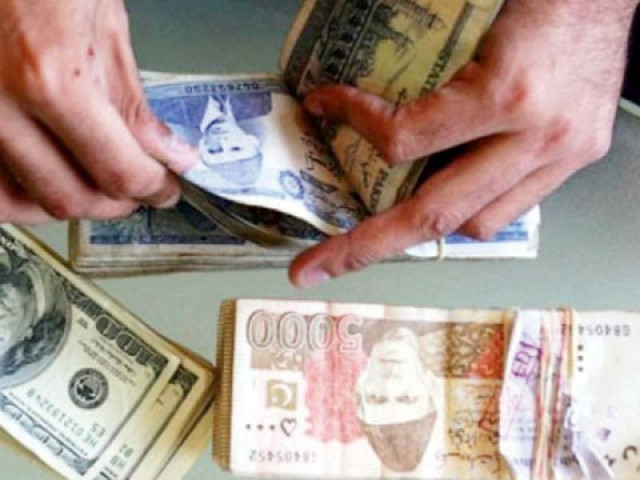Govt walks on tight rope as deficit widens to Rs490b
IMF-permitted limit is Rs625b for first six months of ongoing fiscal year

The Net Foreign Assets increased by Rs105 billion, while the Net Domestic Assets declined by Rs65 billion mainly due to the decline in other assets of scheduled banks. PHOTO: FILE
After missing the first quarter’s budget deficit target, Pakistan seems to be walking a tight rope once again, as the gap between national income and expenses widened to Rs490 billion during July-November of this fiscal year against the first-half’s permissible limit of Rs625 billion.
Budget deficit during the first five months stood at 1.6% of Gross Domestic Product (GDP) or Rs490 billion, said the Finance Ministry on Tuesday.
The hidden deficit in Pakistan’s policies
The International Monetary Fund (IMF) has allowed Pakistan a deficit of Rs625 billion or 2.03% of the GDP in the first half. With a deficit of Rs490 billion in five months, the government has the ‘luxury’ to spend Rs135 billion more than its income in December.
For the current fiscal year, the IMF has asked Pakistan to restrict budget deficit to Rs1.295 trillion or 4.3% of the GDP. The tight fiscal space has suffocated public development spending in the first quarter.
The government has already missed the first quarter budget deficit target of Rs306 billion and sought a waiver from the IMF Board to keep the $6.2 billion programme on track. The IMF agreed to give waiver only after Pakistan assured to take Rs40 billion additional revenue measures to bridge the revenue shortfall - the sole reason for missing the deficit target of first quarter.
In case the government misses the first half’s budget deficit target, the IMF might force it to take additional measures again.
The Finance Ministry shared the budget deficit figures during a meeting of ‘Monetary and Fiscal Policies Coordination Board’. The meeting noted that as long as the country was within the IMF programme, the government did not have the luxury to provide stimulus to economic growth, according to a participant of the meeting.
Finance Minister Ishaq Dar chaired the meeting that was attended by Deputy Governor State Bank of Pakistan (SBP), representatives of Ministry of Commerce, Director IBA Dr Ishrat Husain, and Pakistan Institute of Development Economics (PIDE) Vice Chancellor Dr Asad Zaman in their capacity as board members.
An official of the Finance Ministry said that the board members observed that economic stimulus would be possible after September 2016 - the time when the IMF programme would end, and underscored the need to start preparing the long-term plan now.
“Macro framework module should be integrated to capture the changing economic realities in establishing an effective nexus between output, aggregate demand, expenditure, revenues, foreign trade, money and prices,” said Finance Minister Ishaq Dar in the meeting.
An official handout stated that the finance minister has suggested a committee to work on developing a blue print for growth and job creation.
Dar said the government was taking all steps to enhance exports and removing structural bottlenecks. He also highlighted that the government was taking measures for the facilitation of doing business and enhancing competitiveness - areas where it has miserably failed so far.
The participants expressed concern that despite keeping the interest rate at a four-decade low, the foreign and domestic investment was not picking up. They advised the SBP to find out the reasons why the investment was not increasing.
According to the SBP, the credit to private sector remained at Rs40 billion during July through November 20 period compared with Rs58 billion in the corresponding period last year, which was a matter of concern.
Current account balance improves as deficit shrinks $1 billion
The SBP informed that the foreign currency reserves as of December 4 were above $20 billion. The SBP informed that Net Foreign Assets increased by Rs105 billion. The Net Domestic Assets, however, declined by Rs65 billion mainly due to the decline in other assets of scheduled banks.
Published in The Express Tribune, December 9th, 2015.
Like Business on Facebook, follow @TribuneBiz on Twitter to stay informed and join in the conversation.


















COMMENTS
Comments are moderated and generally will be posted if they are on-topic and not abusive.
For more information, please see our Comments FAQ